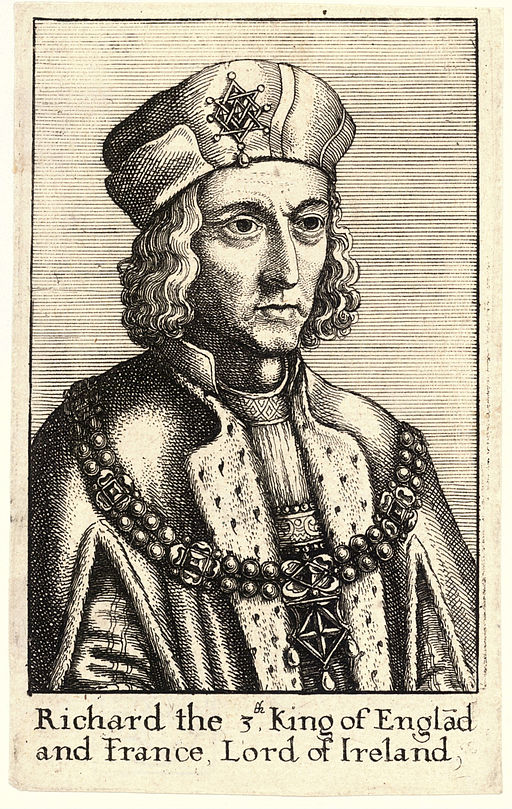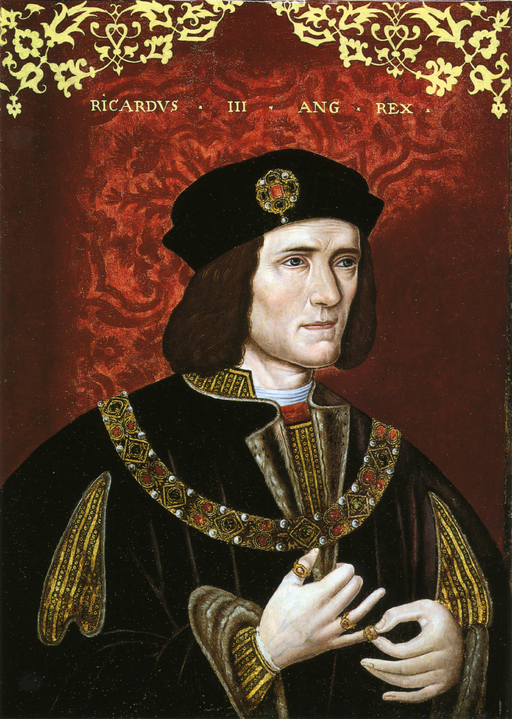 You’ve no doubt heard the news—it’s been all over the place these past few days—that the remains of King Richard III (1452 – 1485) have been found underneath a car park in Leicester, England. They’ve been formally identified by archaeologists, bone specialists, and DNA analysts. The skeleton shows some pretty grievous battle wounds. The base of the skull has been hacked off, most likely with a vicious six-foot-long axe-like thing called a halberd. And his body was probably further mutilated after he died; it appears to have been stabbed through the butt. Nice.
You’ve no doubt heard the news—it’s been all over the place these past few days—that the remains of King Richard III (1452 – 1485) have been found underneath a car park in Leicester, England. They’ve been formally identified by archaeologists, bone specialists, and DNA analysts. The skeleton shows some pretty grievous battle wounds. The base of the skull has been hacked off, most likely with a vicious six-foot-long axe-like thing called a halberd. And his body was probably further mutilated after he died; it appears to have been stabbed through the butt. Nice.
The first time I remember paying any attention to this fifteenth century king was in college, when I took a Shakespeare class and we read Richard III. In Shakespeare’s play, Richard is called a “poisonous bunch-backed toad,” and “that foul defacer of God’s handiwork.” And pretty much from then on, I bought into the Tudor propaganda about the guy, that although loyal to his handsome, womanizing older brother, Edward IV while Edward was alive, he almost immediately usurped the crown upon his brother’s death, littering the path to the monarchy with a trail of bodies. Richard, the Tudors reported, was an evil monarch with a hunchback and a withered arm, and he slew his dead brother’s two young sons (the princes in the tower—12-year-old Edward V and his brother Richard) who stood in the way of his throne.
He reigned for just two years before he was killed in the battle of Bosworth in 1485, the last of the Plantagenet kings. After him, Henry Tudor, known as Henry VII, began the long Tudor reign.
 But there are many who doubt the Tudor version of events. Richard III has his own fan club. These doubters believe that Richard was vilified by writers who were on the Tudor payroll, most notably Sir Thomas More (who wrote The Life of Richard III but was only 8 when Richard died) and Shakespeare himself, whose play was published in 1597, a hundred years after Richard’s death.
But there are many who doubt the Tudor version of events. Richard III has his own fan club. These doubters believe that Richard was vilified by writers who were on the Tudor payroll, most notably Sir Thomas More (who wrote The Life of Richard III but was only 8 when Richard died) and Shakespeare himself, whose play was published in 1597, a hundred years after Richard’s death.
The RIII fans claim that at the time it became widely known that Richard’s brother, Edward IV, had previously married, packed that wife off to a convent, and then hitched up with Elizabeth, who was not, therefore, a lawful wife. And that therefore young Edward and his brother were illegitimate and had no claim to the throne. So why would Richard bother having his nephews killed if they posed no threat? (Their bodies were never found, and the henchman said to have killed them didn’t confess until twenty years after their purported death. And we know how persuasive Tudor jailers could be when extracting confessions.)
Josephine Tey (pen name of Elizabeth MacKintosh) was a fiction writer solidly in the RIII fan club. She published a novel in 1949 called The Daughter of Time, in which a bedridden detective examines the contemporary evidence and concludes that Richard was the victim of a Tudor smear campaign. The book lays out a persuasive defense of Richard.
No matter how you feel about him, it’s pretty cool to have the last of the Plantagenet kings trending on Twitter.